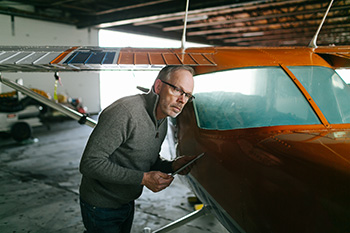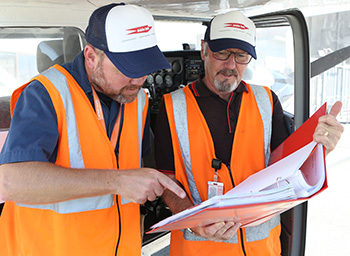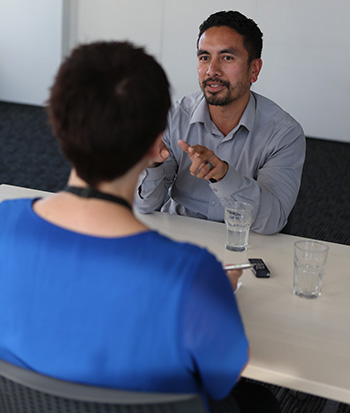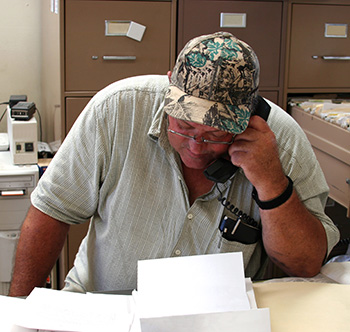So you want to be a senior person? It’s a rewarding position which gives you the opportunity to provide safety leadership and add value to the business.
But it’s not for the faint-hearted.
The role cannot be underestimated and requires commitment to the continual improvement of safety, and commitment to the time it takes to do that properly.

Does your candidate for senior person have the necessary experience, knowledge, and expertise to fully carry out the role? Credit iStock.com/SeanAeroThree
The safety-critical role of a senior person is pivotal to an aviation organisation’s success.
It’s also a requirement of the civil aviation rules. An organisation cannot become the holder of a certificate without senior persons in place.
Senior persons are responsible for all the functions associated with an operation, and they foster the safety culture of the organisation. They exercise an appropriate level of control, direction, and responsibility to ensure the continued safety, and effective running, of the varying operations.
The rules require a senior person, identified as the chief executive, to be responsible for ensuring that the activities of the organisation can be financed and carried out in accordance with the rules. The chief executive also has ultimate accountability for the implementation and effectiveness of the organisation’s safety management system.
Depending on the organisation’s type of operating certificate, other senior persons are responsible for certain supervisory functions.
In the case of an air operator, this would include:
While not necessarily senior in years, senior persons are experienced, skilled, and knowledgeable. They have sufficient time, resources, and authority to fulfil their responsibilities.
By their actions and words, the chief executive and the senior management team – which includes senior persons – set the boundaries of acceptable performance for the organisation’s personnel.
Senior persons need to emphasise and support the adherence to safe practice, policies and procedures, and the open sharing of information and concerns.
They must have an appropriate understanding of human factors, and find the right balance between managing human error and holding individuals to account.
They have a responsibility to create a positive organisational culture to enhance safety performance, and prevent accidents.

The candidate must have an in-depth knowledge of their company’s exposition, and a good working knowledge of the applicable rules and Advisory Circulars. Credit CAA.
As already noted, the nomination, and CAA acceptance, of suitable senior persons is an essential part of certificating an aviation organisation.
Acceptance of a nominated senior person is never automatic, and it’s not uncommon for a senior person candidate to be declined by the CAA.
Often that’s because they, or the applicant (that’s the organisation) on whose behalf they are applying, or both, have insufficient understanding of what the role involves.
One candidate, having been initially declined as a senior person, was at first aggrieved by the decision. Later, however, after more experience in the role – supervised – and in management, they admitted that being declined was understandable – that in the beginning, they literally didn’t know what they didn’t know.
But being turned down by the CAA is stressful to the candidate, an added cost to the applicant that has put them up for an assessment, and can cause delays in certification.
An applicant can minimise such unhappy situations by considering, in good faith, whether their candidate:
That last trait is particularly important. It’s not enough for the senior person to say ‘everyone must act safely’. The candidate must be able to demonstrate to the CAA that they live and breathe that.
To that end, a positive attitude towards communicating, including and importantly with the CAA, is an essential trait in a senior person.
The CAA will be asking things like:
Given the critical nature of the supervisory aspect of the senior person role, it’s important any candidate can demonstrate how they are prepared to go beyond simple compliance with the rules, describing how they would raise the safety bar at their organisation. A safety management system provides a framework to assist them.

Senior persons need to emphasise and support the adherence to safe practice, policies and procedures, and open sharing information and concerns. Photo: istockphoto.com/Zoran Zeremski
Nominating suitable people is just one thing an applicant can do to make sure becoming certificated is a smooth process. They also need to nominate their senior person candidate early in the application process.
It’s not uncommon for an organisation – having made a major financial commitment, and putting themselves in a position of having to generate cash flow sooner rather than later – to overlook the basic requirement of the certification process of nominating appropriate senior persons.
Sometimes, an organisation considers the personnel requirements so late that – while everything else may be in place – their application is much delayed.
If an applicant has no one they can nominate from within their own organisation, they can contract from outside – at least until such time as someone else gathers enough experience to apply successfully to be a senior person.
The Civil Aviation Act 2023 is the primary legislation underpinning aviation safety in New Zealand, and a good understanding of its requirements is essential.
The candidate must have an in-depth knowledge of their company’s exposition, and a good working knowledge of the applicable rules and Advisory Circulars.
Some other fundamental requirements for the nomination of senior persons are found in the Act:
Section 13 General requirements for aviation participants(external link)
Section 80 Fit and proper person test(external link)
Section 75 Grant or renewal of aviation document(external link)
The candidate must be a natural person (not a body corporate). They must be employed, contracted, or otherwise engaged to work sufficient hours to fulfil the senior person functions appropriate to the size and scope of the organisation’s business.
The person nominated by the applicant also has to be experienced in the particular area they will have oversight of.

If not full time, and with perhaps multiple roles in industry, will a senior person candidate spend enough time on site? Will they dedicate enough time to do the job properly? Photo: istockphoto.com/poba
Any candidate for senior person should assess whether they have the time to do justice to the role they’re going to be employed or contracted to do.
In asking that question of themselves, if the honest answer is ‘no’ they should be having a talk with their chief executive before their application gets to the CAA.
Since people often hold multiple roles in an organisation, or multiple roles within industry, the CAA needs to be convinced the candidate will have enough time to be effective. For instance, if not full-time on site, will they spend enough time there, will they dedicate enough time to do the job properly? The CAA needs confidence that not only is the candidate capable, but they’re actually going to be dedicating sufficient time to their responsibilities.
Senior persons, particularly in a small organisation, don’t have to be on site all the time. In an era of mobile phones and internet meetings, a certain amount of time can be spent away from the base of operations.
As they’re in a supervisory role, however, it’s very hard to promote change, and to supervise and monitor the organisation completely, from afar. So it’s expected they will exercise visible leadership and allocate an appropriate amount of time to on-site activities.

CAA will assess a nominated person during a formal, recorded, more-or-less 90-minute interview, to establish the candidate’s competence to perform their designated roles and to ensure the continuing safety of the operation. Credit CAA.
Section 77 of the Act(external link) requires the applicant for certification (that’s the aviation organisation) “…and any person who has or is likely to have control over the exercise of the privileges under the document (that’s the organisational certificate) must continue to satisfy the fit and proper person test…” It also provides for the Director [of Civil Aviation] to be satisfied that granting the document “is not contrary to the interests of aviation safety”.
To help establish that, the CAA will assess a nominated person’s capability and capacity to successfully carry out the role. If appropriate, the CAA may conduct a recorded, formal interview with the candidate to establish their competence to perform their designated roles and to ensure the continuing safety of the operation.
Following an initial review and discussion of the candidate’s qualifications and experience, the candidate will be expected to be able to:
Usually within a few days, the CAA will review the outcome of its assessment and any interview, and complete any required follow-up before providing the candidate with the results.
Either the senior person candidate will be assessed as:

Good senior persons can be trusted by the CAA to get on the phone to the Authority to discuss anything concerning them about their organisation. Photo: istockphoto.com/sierrarat
The CAA is always interested in the ongoing ability of the senior person to do their job.
Senior persons are expected to keep themselves up-to-date with professional development, with rule changes, and with changes to their company’s exposition. They are encouraged to attend user group meetings or relevant professional gatherings. They need to stay ahead of the game.
It would be a mistake for a newly appointed senior person to think they were now ‘through the gate’ and can take their foot off the pedal. Attitude is demonstrated through behaviour, so a senior person must constantly illustrate that they are positive, proactive, and constructive.
Their ability to effectively carry out the role will continue to be monitored, as will their ability to meet the fit and proper person requirements. It’s definitely not a matter of a box tick every five years.
Good senior persons can be trusted by the CAA to get on the phone to the Authority to discuss anything concerning them about their organisation. They’re trusted to communicate quickly, clearly, and not to ‘manage’ the message. The CAA will be interested to hear what they have done, or intend to do, to address the issues in terms of corrective or preventative actions.
They must also demonstrate authentic leadership skills. But, rather than asking, ‘How does this person’s leadership skills contribute to the organisation’s bottom line?’ the CAA asks, ‘How does this person’s leadership skills contribute to developing an effective safety culture?’
Because a certificated organisation’s senior persons are named in its exposition, if they change, so too must the exposition.
That change must be formally notified to the CAA on specific documentation, and approved by the CAA, before executing the change. Visit our forms page, then use the filter by rule categories on the right-hand side of the page.
And we recommend that if you’re a senior person leaving an organisation, you make sure you receive written acknowledgement from that organisation, of your intended departure date. It may also be appropriate to let the CAA know that you’re moving on.